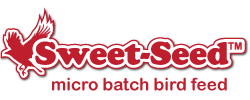How Often to Clean Your Hummingbird Feeder

Hummingbirds will flock to a feeder filled with fresh, sweet nectar, but if that feeder isn’t clean, your hungry hummingbirds can be in trouble. But how often should you really clean your hummingbird feeder?
The Problems With Dirty Feeders
A dirty hummingbird feeder is more than dull and unattractive, it can actually be dangerous for hummingbirds. As nectar ferments, it will grow mold, bacteria, and fungus than can cause illnesses, even fatalities, among birds. Old nectar also dries out and gets a denser, more syrup-like consistency that is more difficult for the birds to sip, and thick nectar can clog feeding ports and crystalize so birds are unable to feed at all. Even if hummingbirds can get a sip or two of thicker nectar, they will not be able to digest it as efficiently, and sticky, thick nectar can coat their feathers and cause preening and flight difficulties. Furthermore, older nectar will give off a strong sour odor that will attract insects, rodents, raccoons, and other unwelcome visitors to the hummingbird feeder. When more wildlife takes advantage of the feeder, there is less nectar available for hummingbirds and even the thirstiest hummers will stay away if they feel threatened or intimidated.
When to Clean Your Hummingbird Feeder
The first indication of when to clean your hummingbird feeder should always be the nectar. Whenever the nectar shows any signs of contamination, including black spots, cloudiness, a milky color, stringy structures, dead insects, or strong odors, the feeder should be drained and thoroughly cleaned. The feeder should be completely disassembled so tiny cracks and niches, including seams and feeding ports, can be scrubbed, and it should be allowed to dry before being reassembled and refilled. If your feeding station is very popular, it can be helpful to have several feeders to use so no hummingbirds miss a sip while you’re cleaning one feeder.
It is also a good habit for birders to simply clean the feeder each time it is refilled. Rather than adding fresh nectar to older and potentially contaminated residue, cleaning the feeder with each refill will ensure the new nectar lasts as long as possible without problems.
There are several options for cleaning hummingbird feeders. A thorough scrubbing with hot, soapy water followed by vigorous rinsing to wash away any soap residue is a common practice, and some sturdy hummingbird feeders are even dishwasher-safe. Many birders also prefer to use weak vinegar or bleach solutions to completely disinfect and decontaminate feeders while cleaning. So long as the feeder is thoroughly cleaned, rinsed, and dried, it will be suitable for refilling and once again offering nectar to hungry hummingbirds.
How Often You Should Be Cleaning Hummingbird Feeders
It is possible that a hummingbird feeder may appear to stay full and clean for several days after being refilled. This may happen during cooler parts of the season when fermentation is much slower, or when plenty of natural, nectar-rich flowers are blooming so birds may not be visiting the feeder as frequently. Furthermore, if you use a large-capacity feeder but only have a few hummingbirds, any contamination may be more difficult to detect, and it can seem as if the nectar is still fresh for days or even weeks. Not all bad nectar is easy to detect, however, and it is best to establish a regular schedule for cleaning hummingbird feeders.
Ideally, hummingbird feeders should be cleaned at least once a week, even without obvious signs of fermentation or contamination. In hotter, more humid weather, however, feeders may need to be cleaned 2-3 times per week, and during the hottest part of the season or unexpected heat waves, nectar feeders may need cleaning and refreshing every day. It can be challenging for any birder to keep up such a busy schedule of feeder cleaning, but switching to easier-to-clean smaller feeders with single feeding ports, or dish-style feeders with fewer parts to disassemble, can make the task quicker and easier. Having several feeders on hand can also allow birders to switch out different feeders so a clean one is always available to hummingbirds, even if dirty feeders stack up for a few days (out of birds’ reach!) before being cleaned.
A clean feeder is essential to offer hummingbirds fresh, healthy nectar, and knowing how often to clean feeders is part of being a thoughtful and conscientious backyard birder. Clean, full feeders will attract more hummingbirds, and soon you’ll be enjoying an entire flock of flying jewels around your sparkling clean nectar feeders.
